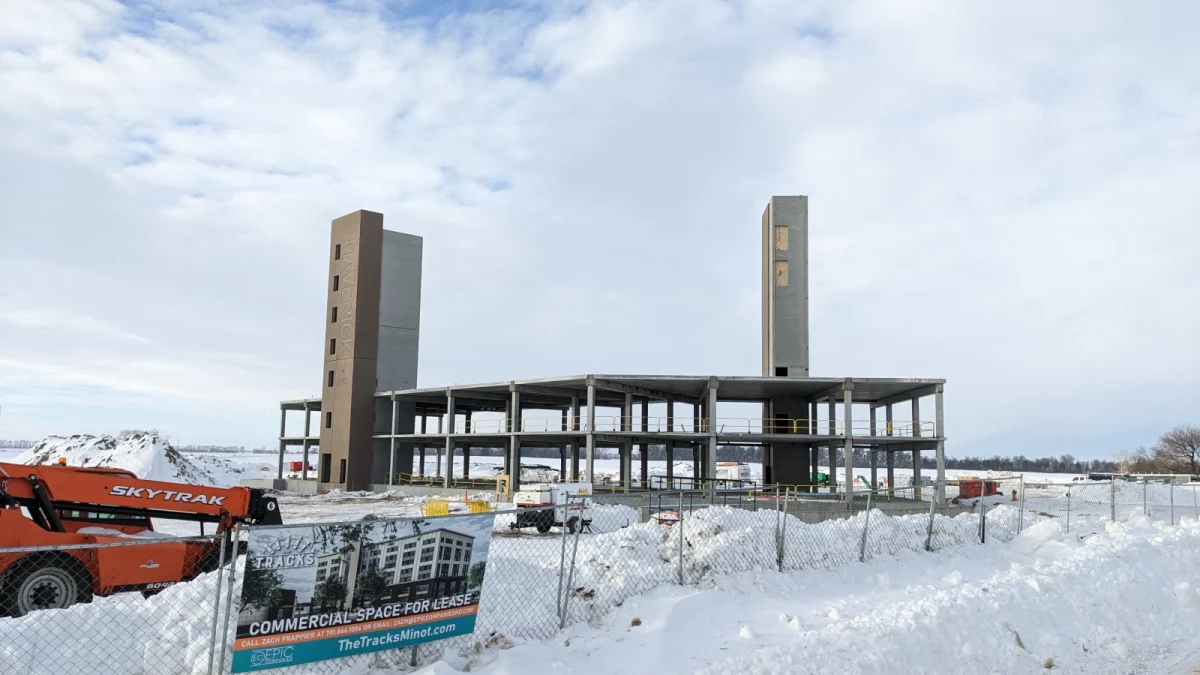Let me say at the outset, that I’m a supporter of tax incentives and TIF districts. The TIF district approved for the Big M building was an outstanding use; we the taxpayers would have owned and paid for the demolition of that building had it not been saved through use of a TIF.
Sometimes the private markets that shape investment and development break. When they do, public, tax-incentive support to jump-start them can make a difference.
Let me also say that I’m not unconditionally or even currently against this project. At this point, I have some questions, and I hope we answer or at least acknowledge these before giving one developer a $14.6 million tax incentive.
The Project Details
In case you don’t know what this is all about, an application by a property developer to implement a TIF District is going before City Council tonight. TIF stands for Tax Increment Financing, and they are not the easiest concept to understand. Here’s a quick explainer that may help.
And here are the details provided to Minot City Council for consideration tonight for The Tracks property.
RECOMMENDED ACTION
- It is recommended City Council conduct a public hearing on (1) the proposed TIF District 2022-2 development or renewal plan and (2) the proposed TIF District 2022-2 Master Development Agreement;
- Approve TIF District 2022-2 and authorize the Mayor to execute the related Resolution; and
- Authorize the Mayor and necessary City staff to execute the Master Development Agreement and any related documents.
Documents:
- CC MEMO – THE TRACKS TIF.PDF
- MASTER DEVELOPMENT AGREEMENT – THE TRACKS V3 (12.29.22) FINAL DRAFT.PDF
- THE TRACKS TIF RESOLUTION, PHASE ONE.PDF
- THE TRACKS – APPLICATION.PDF
- OFFICIAL URBAN RENEWAL PLAN AND GENERAL DEVELOPMENT PLAN.PDF
- EPICTRACKSTIFPRESENTATION_221229_FINAL_REDUCED.PDF
Some Questions Before A Decision
And to continue, here are some of the questions this application has generated; if I were asked to decide on this district, I’d want to have some pretty solid answers on all of these before voting yes.
On Transparency
This item, a first-phase $2.9 million property tax incentive that is directly tied to a second $11.5 million property tax incentive was introduced on a Friday before a holiday weekend with requested action the following Tuesday.
Question: Is this level of transparency – four days notice – one that grows trust in leadership or diminishes it?
Question: Given this fast turnaround, is tabling the issue for a couple of weeks have some trust-building value?
On Notifications
This is a public hearing on possibly the biggest economic development request ever made to this community.
Question: What notification efforts were made to both the public and the property owners most impacted by seeing a competing property owner and landlord request a $14.6 million local tax subsidy?
Answer: I reached out to the City with this question early this morning. The item was noticed properly in the Minot Daily, and 31 notices were sent to other mixed-use property owners, mostly in the downtown.
On Past Public Investments In This Area
In the past, the City of Minot used $5.5 million in state surge funding to improve 37th Ave to its current condition. The City also decided to limit landfill expansion in this area and incur the expense of moving it (at a to-be-determined future date) to further incentivize development in this area.
Question: We already paid for the road and other improvements in this area. These costs have not been forwarded to the land developers. Is there a limit, or should there be a limit on the amount of public subsidies invested in an area to see it developed?
Question: What is the new infrastructure (roads, sewer, storm sewer, etc) in this area currently costing us to maintain and are the revenues from new development covering our current and future costs?
On the Resolution to Main Street Principles
On June 6, 2022, City Council passed a resolution in support of Governor Burgum’s Main Street Initiative.
Question: Is subsidizing this development (beyond the existing public infrastructure already built) in alignment with our Main Street Initiative Resolution?
On Market Demand For Housing & Commercial Space
The presentation attached to the City Council agenda item references Maxfield Research & Consulting and what is presumed to be a research report they conducted. Conclusions from this report include:
- “Demonstrated by rising rents, restrained development, and declining vacancy rates, it appears that Minot’s apartment market has recovered from oversupply and saturation and is moving into the expansion phase of the real estate cycle.”
- “We anticipate that a new construction market rate apartment-style project in Minot would achieve rents higher than the current market average.”
- “We anticipate that additional moving into the expansion phase retail space will be needed in the City to support the additional demand for retail goods and services generated by new household growth.”
Questions:
- Where is this report and who paid for it?
- If it’s being used to influence City Council decisions and public investment, should it be available to the City Council and the public?
- Should the City of Minot be in the business of subsidizing housing that will “achieve rents higher than current market average”?
- What are the current average market rents and vacancy rates?
- Is a current housing market study commissioned by the public appropriate before making this type of public investment?
On Contradictions in Spending
The City of Minot has invested many tens of millions in Federal Disaster relief and NDR Funds in supporting affordable and LMI (Low/Moderate Income) housing.
Question: Is subsidizing both low-income/affordable housing and housing units that “achieve rents higher than current market average” a sound and sustainable strategy in community development?
On impacts of subsidizing housing and commercial property
Commons sense suggests that Minot does not have a limitless supply of renters.
Question: What happens to property values (and tax collections), vacancy rates, and occupancy in other parts of town and other properties when we subsidize one particular project like this? In other words, what are the economic costs of this granting this tax subsidy?
Question: What impact does a project like this have on the attitudes of smaller real estate developers and property owners towards continuing small investments in Minot?
On whether this investment is a priority
The arguments in support of this project include the need for development in this area and the public amenities that it will build and support including the plaza, parking ramp, and sign board.
Questions
- Is there evidence to suggest that new development in this area needs a hand-up?
- Is there a demand for parking in this area that warrants a parking ramp investment for private property?
- Is there a lack of public amenities for things like ice rinks, event venues, and turf fields that warrants this public investment?
- Was a public amenity of this nature and location included as part of the Park District’s recently completed long-term planning?
On needed future infrastructure
A development with amenities of this nature is likely to create traffic and pedestrian activity between the new hospital and 37th Ave access points.
Question: What infrastructure accommodations will we need to be made for increased traffic and pedestrians and who will pay for them?
Question: Should new infrastructure costs be paid for by the TIF?
On splitting the TIF
This TIF project is split in two. The first phase includes a 5-year $2.9 million incentive. The second phase includes an $11.6 million incentive. The city memo specifically states that the second phase will not happen without the TIF district. Public amenities are split between the two TIF projects.
Question: If the completion of the public amenities advertised in the first project is tied to the approval of the second project, why was the project split into two phases?
Question: If the market supports the increased housing and commercial space units as indicated by Maxfield Research & Consulting, why does the project need to be split?
On whether these amenities are truly public
The design documents provided make perfectly clear. This is a park-like amenity that will be paid for by the public surrounded exclusively by properties of one private sector owner.
Question: Is this the model of public amenities and ownership that best serves the community and our continued economic development?



